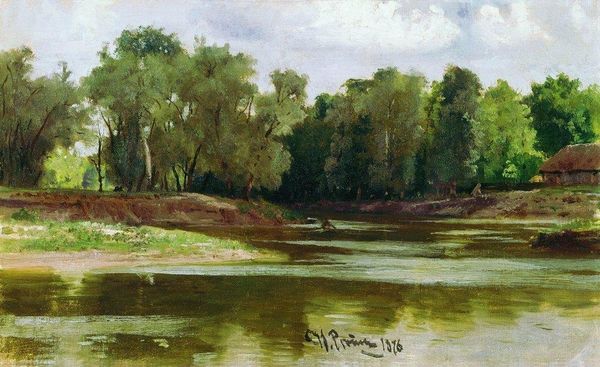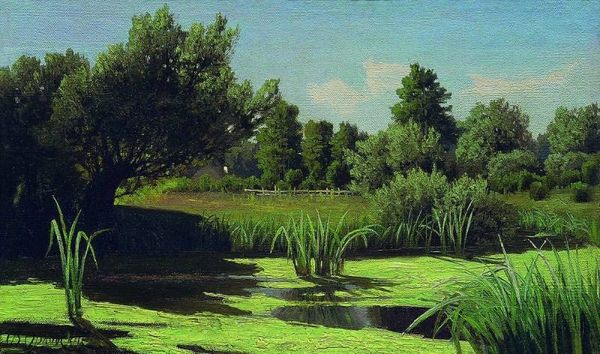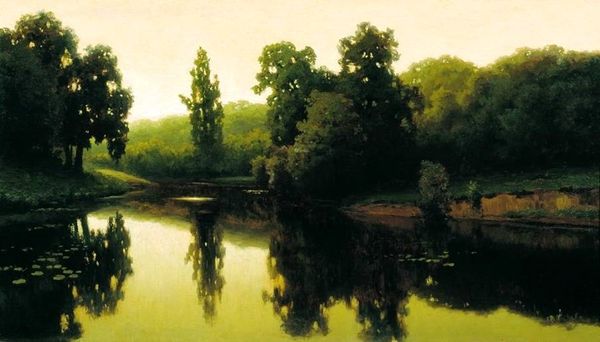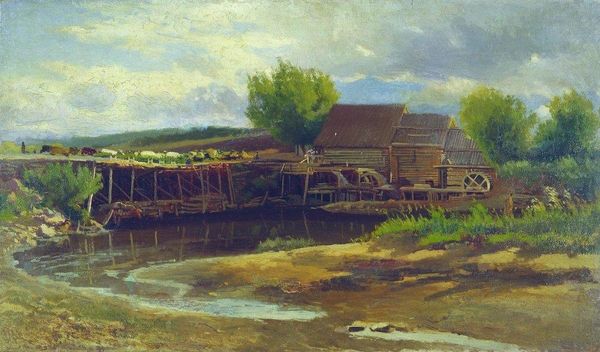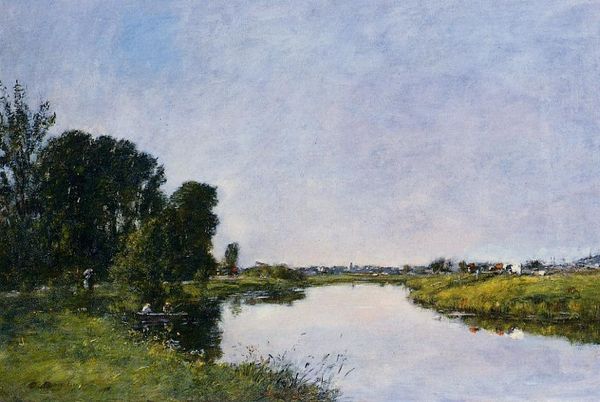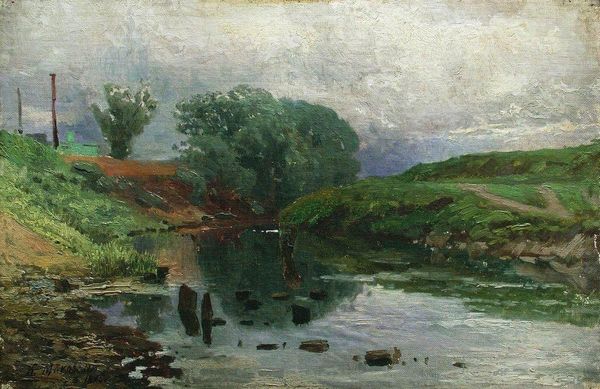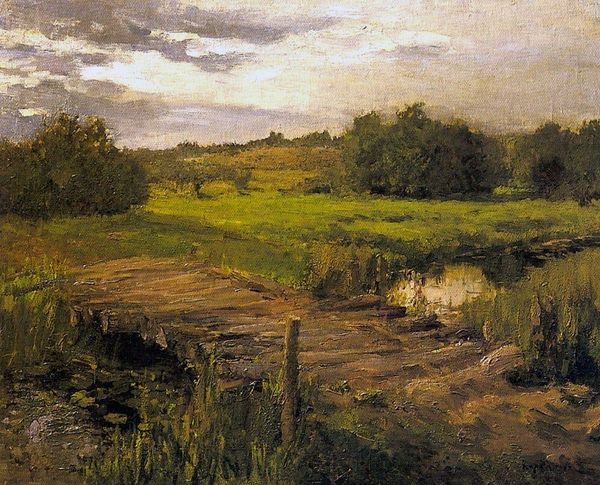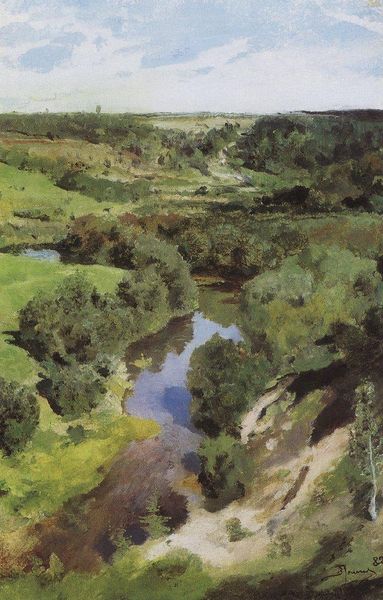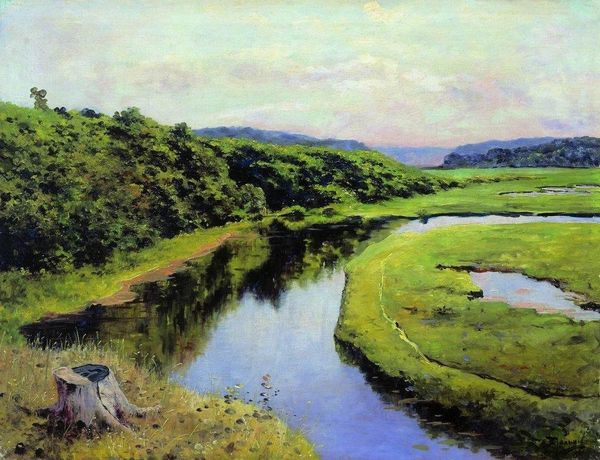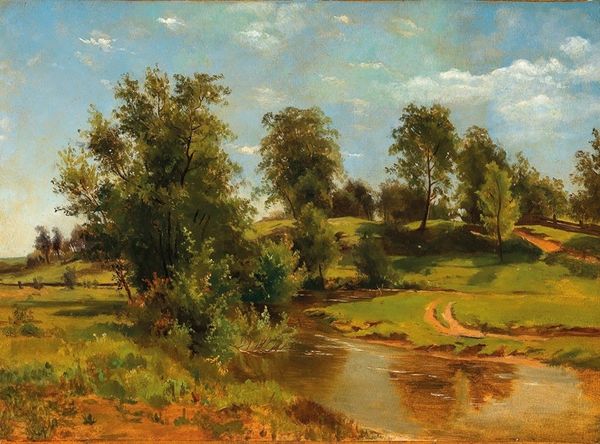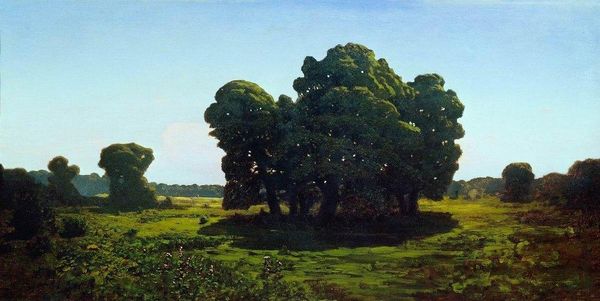
painting, plein-air, oil-paint
#
tree
#
painting
#
impressionism
#
plein-air
#
oil-paint
#
landscape
#
river
#
impressionist landscape
#
oil painting
#
realism
Copyright: Public domain
Curator: Volodymyr Orlovsky painted "Summer Landscape" in 1877 using oil paint, in a plein-air style. It offers us a slice of rural life steeped in the tradition of Russian landscape painting. Editor: My first thought? It's… melancholy. Not what I expect from a 'summer landscape.' The color palette feels muted, earthy; it’s less vibrant and more…contemplative. Curator: That muted palette actually tells us a lot about the art world at that time. Realism was dominating; artists were breaking away from Romantic idealizations, and showing nature as they actually saw it. No frills. Editor: And I see hints of Impressionism too, in those short, broken brushstrokes creating textures within the trees and along the riverbank. I'm also struck by how the painting uses the bridge. Curator: Bridges in art are commonly read as transitional spaces. They invite a viewer to step from where they are into a new place, suggesting a path toward change. Think about who had access to such pastoral scenes? Who could afford leisure and movement in 1877 Russia? The image promotes movement, sure, but at what societal cost? Editor: Exactly! Landscape paintings aren’t just pretty scenes. The bridge can offer a sense of the divide between an idyllic image and how such spaces relate to power. It makes you consider whose experience is centered, and whose is left out of the picture. Curator: I’d argue Orlovsky captured a key moment in landscape art. His work demonstrates both the detailed observation of Realism and the newer techniques of Impressionism, showing the bridge between art practices themselves, so to speak. Editor: Ultimately, this isn’t a simple celebration of a sunny day, then. It is asking the viewer to pause and reflect upon what a landscape can say. Curator: Absolutely. Orlovsky delivers more than just trees and a river; we gain a lens to understand the changing political, social, and artistic landscape of his time. Editor: Yes, a beautiful reminder that what appears straightforward may actually contain multiple perspectives worth considering.
Comments
No comments
Be the first to comment and join the conversation on the ultimate creative platform.
